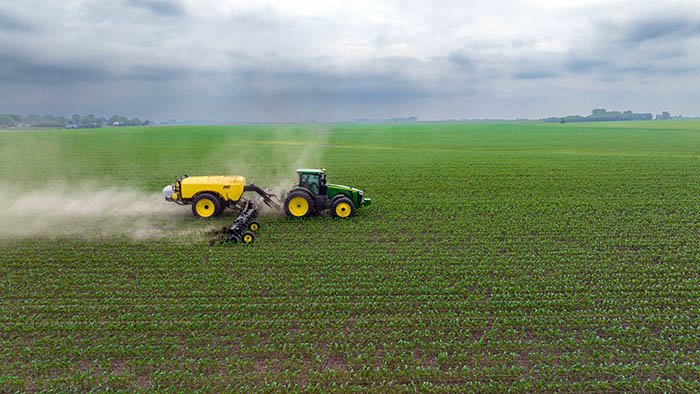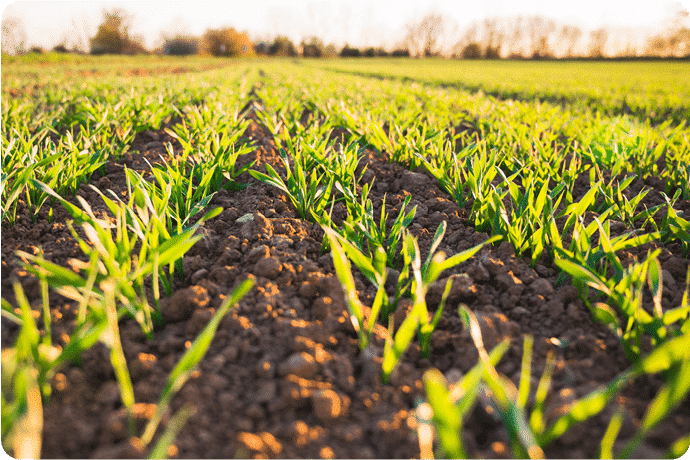The Duty of Biotechnology in Agriculture Advancements
The Duty of Biotechnology in Agriculture Advancements
Blog Article
Enhance Agricultural Productivity With High-Quality Water Soluble Polymers
These polymers use a variety of advantages that can change conventional farming approaches, from boosting water retention and effectiveness to maximizing dirt structure and nutrient delivery systems. By harnessing the power of cutting-edge polymer remedies, farmers can potentially unlock new paths towards accomplishing greater plant returns while alleviating environmental effects.

Advantages of Water-Soluble Polymers
Water-soluble polymers use a wide variety of advantages in farming applications because of their boosted water retention homes and capability to boost soil framework. Agriculture. These polymers, when included in the soil, can substantially enhance water holding ability, minimizing the regularity of irrigation needed by crops. By creating a gel-like substance when blended with water, water-soluble polymers create a tank that slowly launches moisture to plant roots, ensuring a more consistent water system during dry spells
In addition, these polymers help in avoiding dirt erosion by binding dirt fragments together, thereby boosting soil structure and security. Improved soil structure enables far better origin penetration and oygenation, promoting much healthier plant development and higher crop yields. Water-soluble polymers additionally help in nutrient retention by minimizing leaching, making certain that necessary nutrients stay offered to plants for a longer duration.
Improved Water Retention and Effectiveness
Enhancing farming water retention and efficiency via the consolidation of sophisticated polymer modern technologies has become a critical emphasis in modern farming methods. Water-soluble polymers play a crucial role in enhancing dirt framework, boosting water seepage, and reducing water evaporation rates. By developing a thin film on the soil surface, these polymers help to avoid water overflow and boost the dirt's water-holding capability, making sure that plants have access to an appropriate water system.
In addition, using high-quality water-soluble polymers can significantly lower the frequency of irrigation, as they enhance the soil's capacity to maintain dampness for longer durations. This not only conserves water but also decreases the energy and labor costs related to watering techniques. In addition, improved water retention and performance cause much better nutrient uptake by plants, resulting in enhanced crop yields and total farming productivity.
Enhanced Nutrient Distribution Equipment
Provided the significant influence of high-grade water-soluble polymers on boosting water retention and performance in farming, the focus currently shifts in the direction of maximizing nutrient distribution systems to even more enhance plant growth and yield. Boosted nutrient shipment systems play an important duty in ensuring that plants obtain the required nutrients in a form that is easily available for uptake, advertising their overall wellness and performance. By incorporating water-soluble polymers right into nutrient delivery systems, the performance of nutrient uptake by plants can be considerably improved.
One trick benefit of using top quality water-soluble polymers in nutrient distribution systems is their capacity to control the release of nutrients, making sure a steady and regulated supply to plants over an extended duration (Agriculture). This regulated release system aids stop nutrient leaching and drainage, thus taking full advantage of vitamins and mineral utilization by crops and lowering environmental effect

Soil Structure Optimization Strategies
Enhancing dirt structure is paramount in contemporary agriculture for making best use of crop returns and promoting lasting land management practices. Dirt framework optimization methods play an essential function in making sure that soil gives a suitable environment for plant development. One essential method is the enhancement of raw material, such as compost or manure, which assists enhance dirt structure by improving its water-holding ability and nutrient retention.
Furthermore, exercising minimal husbandry or no-till farming can prevent soil compaction and promote the development of a healthy and balanced dirt framework. Cover cropping is another efficient strategy that includes growing plants especially to protect and improve the soil, protecting against erosion and enhancing soil framework.
Moreover, executing crop rotation techniques can assist damage pest and disease cycles, while likewise improving soil structure with the differing origin frameworks of various plants. Generally, using these dirt structure optimization methods can cause boosted agricultural efficiency, reduced ecological effect, and lasting sustainability in farming techniques.
Lasting Solutions for Plant Returns

To attend to the difficulties of making best use of crop yields while promoting sustainable land management techniques, exploring sustainable solutions becomes crucial in contemporary agriculture. One lasting option for enhancing plant returns is the usage of precision agriculture methods.
Furthermore, advertising plant turning and cover cropping can help preserve dirt health and wellness, decrease erosion, and enhance vitamins and mineral biking, ultimately contributing to greater returns gradually. Integrated bug administration techniques also play a key duty in sustainable plant manufacturing by decreasing the dependence on chemical pesticides and advertising natural insect control methods.
In addition, spending in study and technology for creating drought-resistant crop varieties and climate-resilient farming techniques can assist mitigate the impact of climate adjustment on agriculture while guaranteeing regular basics returns in the face of environmental obstacles. By embracing these sustainable remedies, farmers can accomplish greater crop yields while safeguarding the wellness of the land for future generations.
Final Thought
Finally, making use of high-grade water-soluble polymers in farming uses various advantages such as improved water retention, boosted nutrient delivery systems, and enhanced dirt structure. By applying sustainable options for plant yields, farmers can significantly raise agricultural performance and efficiency. Agriculture. Water-soluble polymers supply a cost-effective and eco-friendly method to improve the total performance of farming techniques, resulting in far better outcomes for both farmers and the atmosphere
These polymers use an array of look at these guys benefits that can transform typical farming methods, from enhancing water retention and performance to maximizing soil structure and nutrient distribution systems.Additionally, these polymers help in stopping dirt disintegration by binding dirt particles with each other, thereby enhancing soil structure and security. By creating a slim movie on the soil surface area, these polymers aid to protect against water runoff and raise Recommended Site the soil's water-holding capacity, guaranteeing that plants have access to an appropriate water supply.
Dirt framework optimization techniques play a critical role in ensuring that soil provides an optimal atmosphere for plant growth.In final thought, the use of top notch water-soluble polymers in agriculture supplies various benefits such as enhanced water retention, improved nutrient distribution systems, and maximized dirt structure.
Report this page